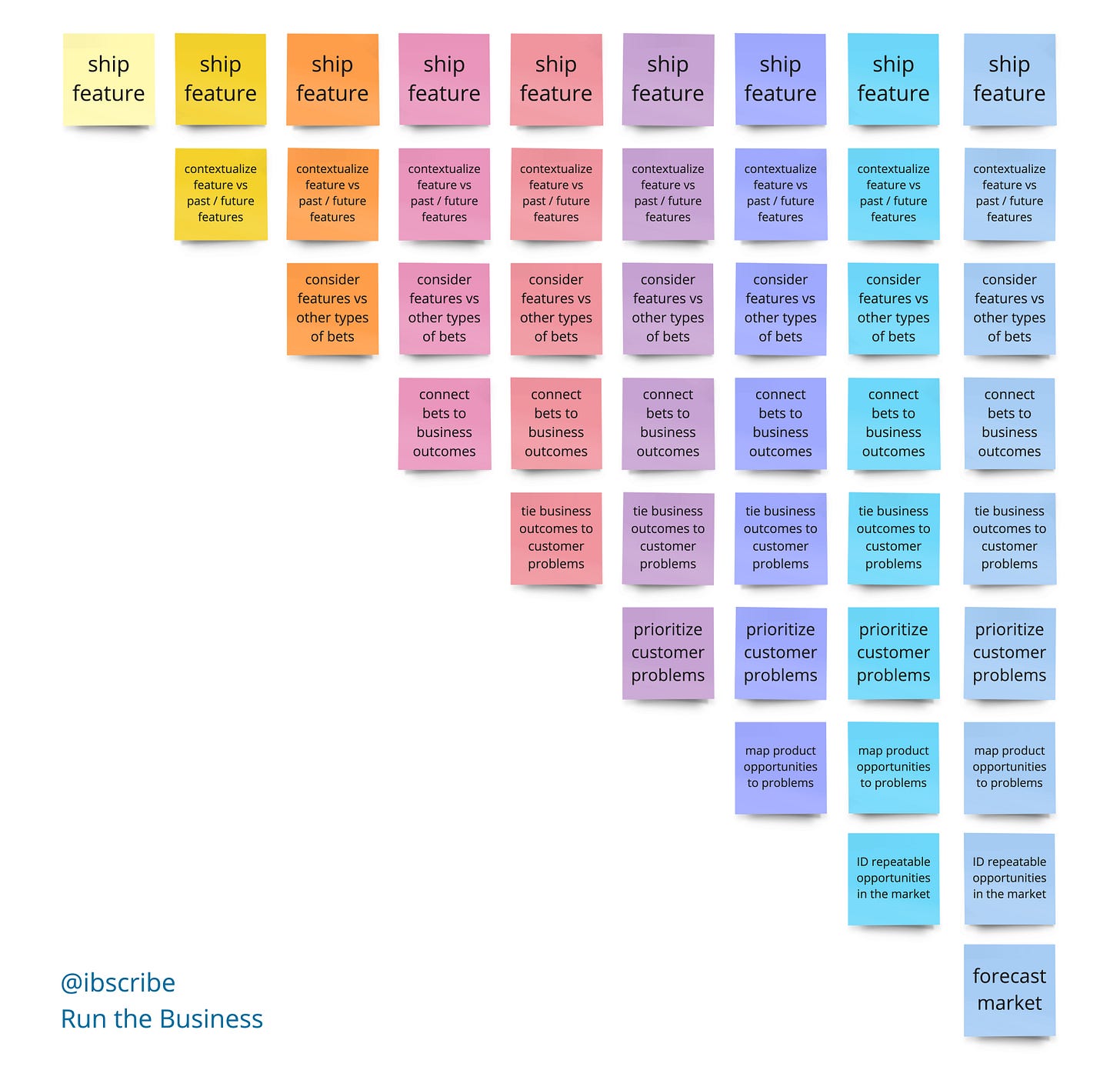PM ladders (and career ladders in general) tend to elicit a lot of feelings. To some they are an obstacle course to navigate. To others they are a playbook for how to play the game. They can be hard to interpret, but if you look past the hard skills (the what) and the soft skills (the how) and translate them into plain English (vs jargon), you can actually have a thoughtful career planning conversation.
Below is my mental mapping for how PMs evolve, which is more oriented towards the mode they operate in.
You can see the breadth of mindsets here ranges from “ship feature” to “forecast market”, and there’s room here for all levels ranging from APM to CPO. Some examples of what a PM ladder overlaid on this framing could look like:
APM -> PM -> Sr. PM -> Staff / Principal PM -> Director -> VP -> CPO
PM I -> PM II -> Sr. PM -> Group PM -> Dir -> Sr. Dir -> VP -> SVP -> EVP
The simple leveling translation I use:
can you ship?
can you contextualize?
can you manage a portfolio?
can you move business metrics?
can you create value for customers?
can you translate user problems into products?
can you differentiate and derisk opportunity pursuits?
can you identify one-off vs repeatable market opportunities?
can you articulate an instinct and point of view on market evolution?
Another way to view this is 2 dimensions: execution and vision. The top left / bottom right stickies represent the extremes of those mentalities. And strategy is the through line that connects everything (see references section for more thoughts on this).
What specific titles you create depends on many factors (corporate ladders, comp ranges, people policy, incentive structure), but for a product leader I think it’s important to delinate along these lines so that you can have clear conversations with PMs on what the “next step” looks like.
I’d love to hear from readers on how they interpret the PM ladder - please chime in via comments👇. And if you enjoyed this post, please consider subscribing.
further reading / references
the 4 F’s are a reminder that there is more product work than just features
this recent Build podcast episode with Jackie Bavaro discussing her new book has some unconventional thoughts on PM career ladders as well
if you’re discussing career progression with PMs in on your team, the SCARF model is a good framework for understanding people’s motivations
some prior thoughts on illuminating and implementing product strategy, which is the steel thread that stitches together product execution and product vision
childish drawing / interpretation







In your experience, where do Product Managers usually get stuck the most? Any ideas on why that happens and what could help them get unstuck?
Nice overview. Do you think there might be situations in which people skip a level? Like being able to tie business outcomes without being able to bet.